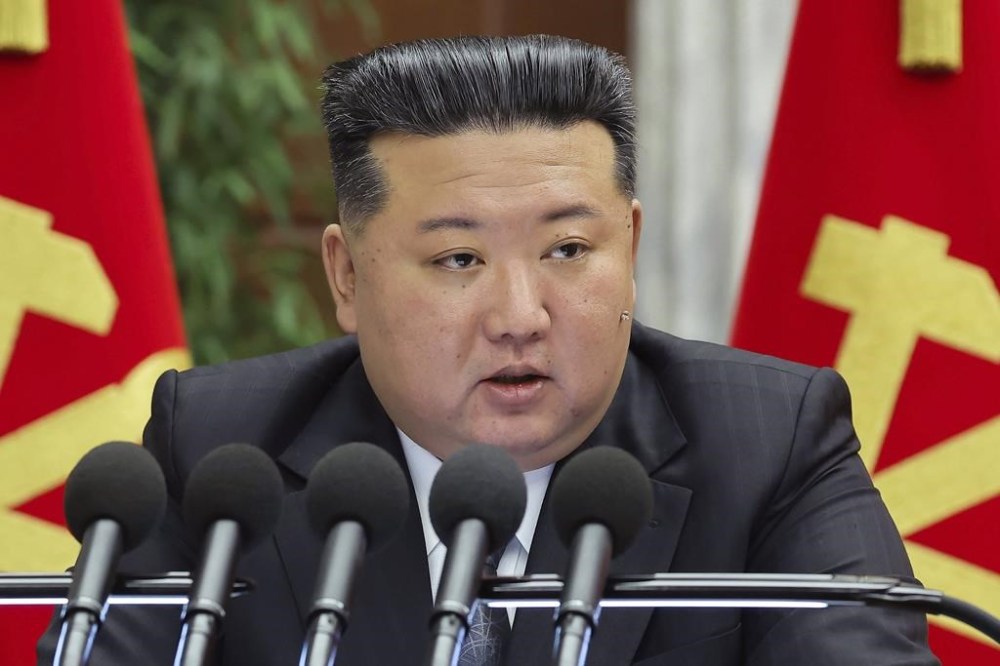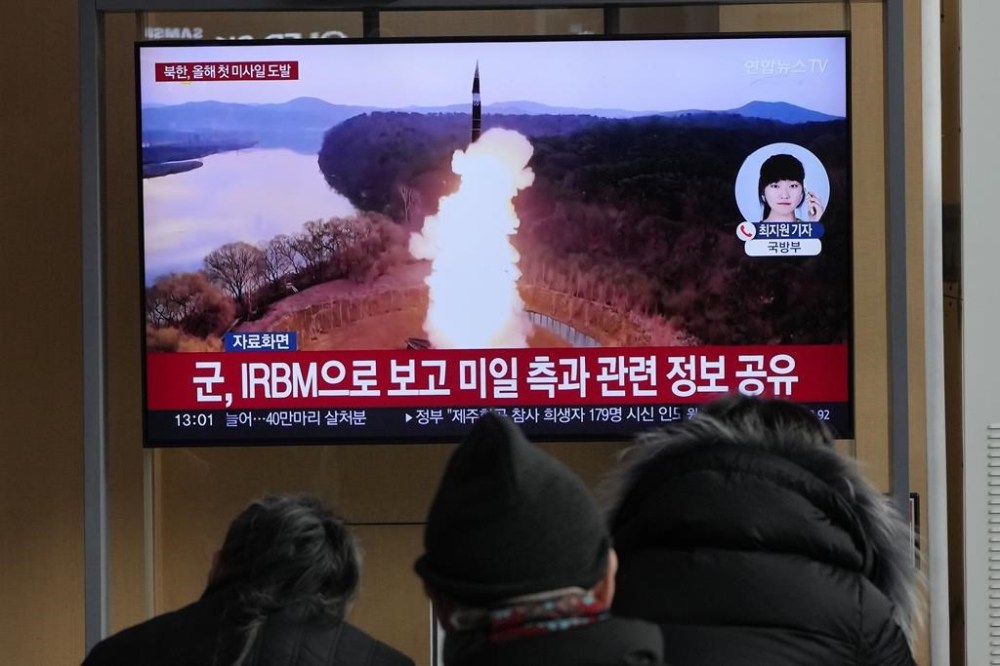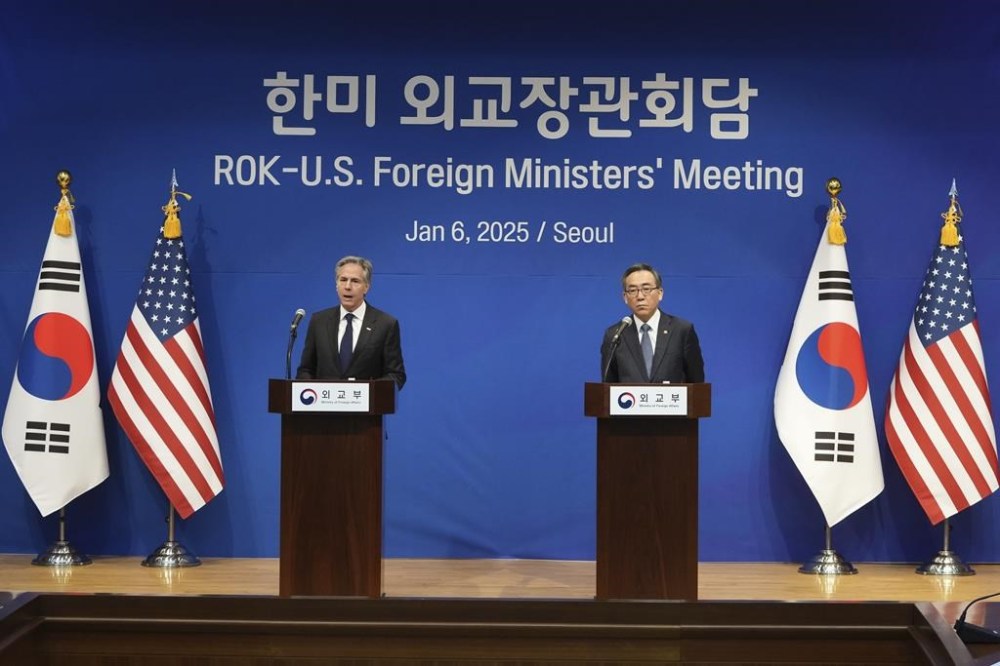South Korea’s military says North Korea fired missile into eastern sea
Advertisement
Read this article for free:
or
Already have an account? Log in here »
We need your support!
Local journalism needs your support!
As we navigate through unprecedented times, our journalists are working harder than ever to bring you the latest local updates to keep you safe and informed.
Now, more than ever, we need your support.
Starting at $15.99 plus taxes every four weeks you can access your Brandon Sun online and full access to all content as it appears on our website.
Subscribe Nowor call circulation directly at (204) 727-0527.
Your pledge helps to ensure we provide the news that matters most to your community!
To continue reading, please subscribe:
Add Brandon Sun access to your Free Press subscription for only an additional
$1 for the first 4 weeks*
*Your next subscription payment will increase by $1.00 and you will be charged $20.00 plus GST for four weeks. After four weeks, your payment will increase to $24.00 plus GST every four weeks.
Read unlimited articles for free today:
or
Already have an account? Log in here »
Hey there, time traveller!
This article was published 05/01/2025 (284 days ago), so information in it may no longer be current.
SEOUL, South Korea (AP) — North Korea on Monday fired a ballistic missile that flew 1,100 kilometers (685 miles) before landing in waters between the Korean Peninsula and Japan, South Korea’s military said, extending its heightened weapons testing activities into 2025 weeks before Donald Trump returns as U.S. president.
The South’s Joint Chiefs of Staff said the midrange missile was fired from an area near the North Korean capital of Pyongyang and that the launch preparations were detected in advance by the U.S. and South Korean militaries. It denounced the launch as a provocation that poses a serious threat to peace and stability on the Korean Peninsula.
The joint chiefs said the military was strengthening its surveillance and defense posture in preparation for possible additional launches and sharing information on the missile with the United States and Japan.

Japan’s Defense Ministry said the missile landed outside its exclusive economic zone and that there were no reports of damage to vessels or aircraft.
The launch came as U.S. Secretary of State Antony Blinken was visiting Seoul for talks with South Korean allies over the North Korean nuclear threat and other issues.
Blinken’s visit comes amid political turmoil in South Korea following President Yoon Suk Yeol’s short-lived martial law decree and subsequent impeachment by parliament last month, which experts say puts the country at a disadvantage in getting a steady footing with Trump ahead of his return to the White House.
In a news conference with South Korean Foreign Minister Cho Tae-yul, Blinken said they condemn North Korea’s latest launch, which violates U.N. Security Council resolutions against the North, and reiterated concerns about the growing alignment between Pyongyang and Moscow over Russian President Vladimir Putin’s war on Ukraine.
According to U.S., Ukrainian and South Korean assessments, North Korea has sent more than 10,000 troops and conventional weapons systems to support Moscow’s war against Ukraine. There are concerns that Russia could transfer North Korea advanced weapons technology in return, which could potentially enhance the threat posed by leader Kim Jong Un’s nuclear-armed military.
Blinken described the military cooperation between Russia and North Korea as a “two-way street,” saying Russia has been providing military equipment and training to the North and “intends to share space and satellite technology.”

Blinken and Cho both dismissed concerns about damage to the U.S.-South Korea alliance in the aftermath of the political turmoil in Seoul. Experts had warned that Yoon’s martial law decree — which lasted only hours but has rattled politics, high-level diplomacy and financial markets for weeks — exposed the fragility of South Korea’s democratic system in a divided society.
“We had serious concerns about some of the actions that President Yoon took and we communicated those directly to the government,” Blinken said. “At the same time we have tremendous confidence in the resilience of South Korea’s democracy, in the strength of its institutions and in the efforts that it’s making to work through those institutions, pursuant to the constitution and the rule of law to resolve differences and to do so peacefully.”
In a year-end political conference, Kim, the North Korean leader, vowed to implement the “toughest” anti-U.S. policy and criticized the Biden administration’s efforts to strengthen security cooperation with Seoul and Tokyo, which he described as a “nuclear military bloc for aggression.”
North Korean state media did not specify Kim’s policy plans or mention any specific comments about Trump. During his first term, Trump met Kim three times for talks on the North’s nuclear program.
Many experts, however, say a quick resumption of Kim-Trump summitry is unlikely as Trump would first focus on conflicts in Ukraine and the Middle East. North Korea’s support for Russia’s war against Ukraine also poses a challenge to efforts to revive diplomacy, experts say.
Before his presidency faltered over the ill-conceived power grab on Dec. 3, Yoon worked closely with U.S. President Joe Biden to expand joint military exercises, update nuclear deterrence strategies and strengthen trilateral security cooperation with Tokyo. South Korea’s opposition-controlled National Assembly voted to lift the martial law hours after he announced it on TV and impeached him on Dec. 14.

With his presidential powers suspended, Yoon’s fate lies with the Constitutional Court, which has begun deliberations on whether to dismiss or reinstate him.
__
AP writer Mari Yamaguchi in Tokyo contributed.
